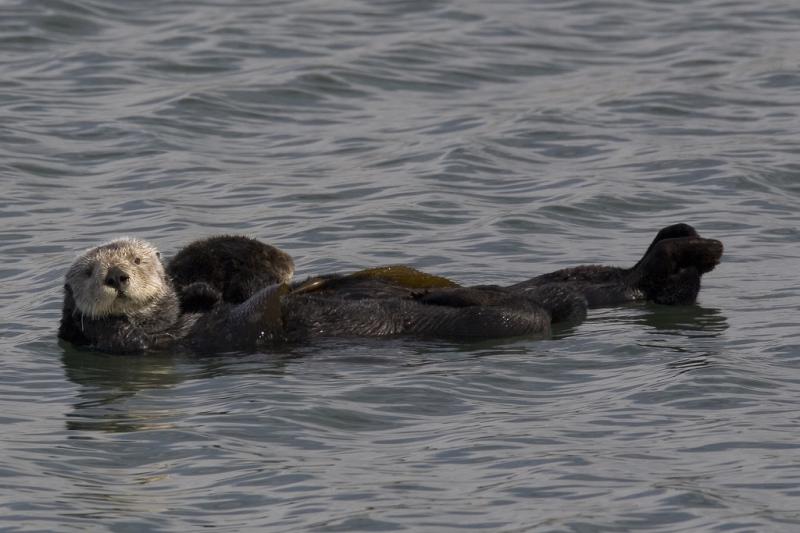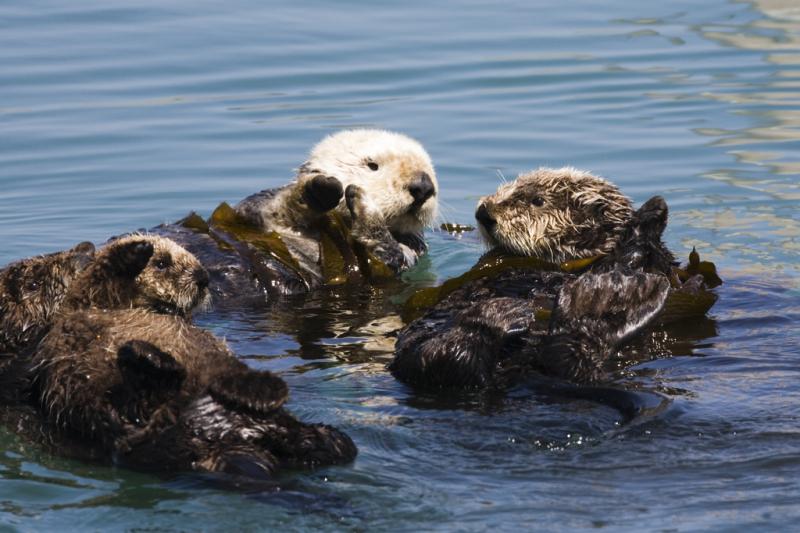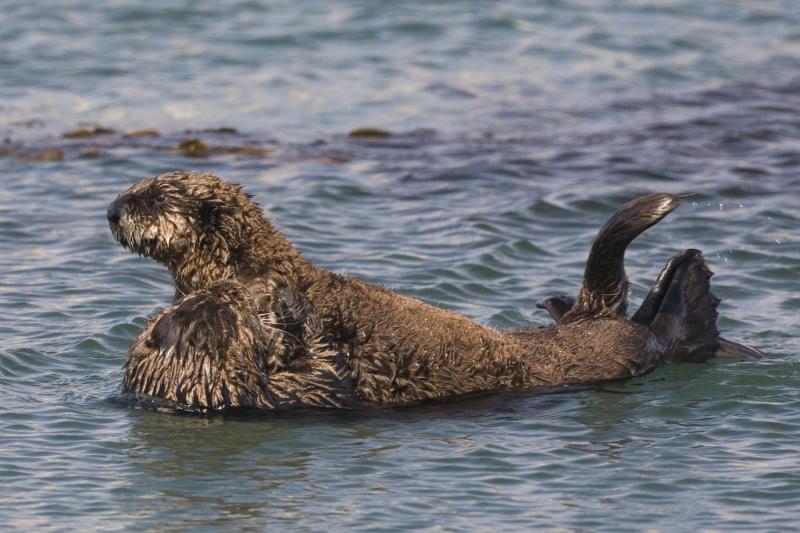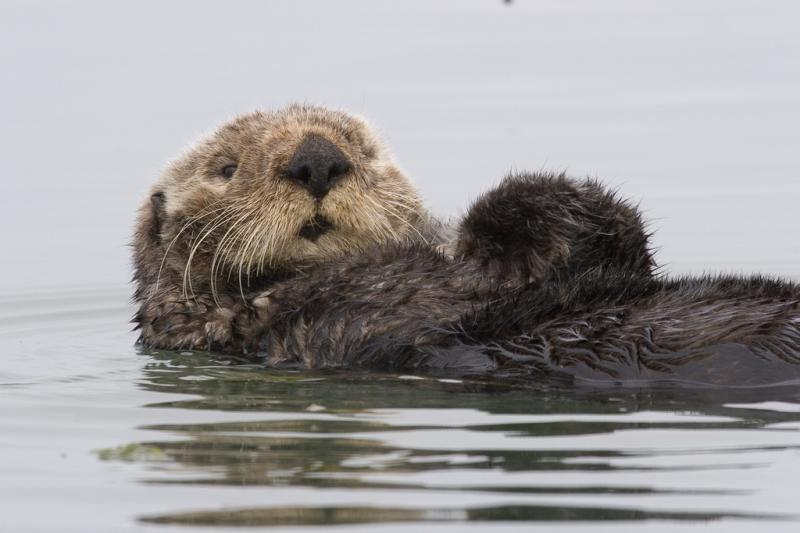Wildlife North America . com North American Animals - mamals, birds, reptiles, insects |
Sea Otter (Enhydra lutris)
Mother Sea Otter with pup at Morro Bay, California. Photograph by Mike Baird. Some rights reserved. (view image details) 
Sea Otter Mother with Pup, Morro Bay, CA Photograph by Mike Baird. Some rights reserved. (view image details) 
Sea Otter Mother with Pup, Morro Bay, CA Photograph by Mike Baird. Some rights reserved. (view image details) 
Sea Otter preening itself in Morro Bay Photograph by Mike Baird. Some rights reserved. (view image details)
SEA OTTER FACTS
DescriptionThe Sea Otter has brown or reddish brown fur. The tail is less than a third of the body length. They have the densest fur of all mammals - this helps them maintain warmth in the ocean. The hind legs are long with broad, flat webbed paws. The front legs are short with retractable claws Size The Sea Otter is the largest member of the Mustelidae family. Length 1.1m - 1.5m. Males are slightly larger than females. Environment coastal waters with rocky or soft sediment ocean floor, less than 1 km from shore. Food abalone, crabs, shell fish, sea urchins. Also some octopus, squid, fish. Breeding Sea Otters mate and give birth in the water. A single pup is born after gestation of about 6 months (somewhere between 4 - 12 months). The young are weaned after about 6 months. Range off the coast of central California, the Aleutian Islands and southern Alaska. Has been reintroduced to various locations from south of Prince William Sound, Alaska to Oregon. Conservation Status The conservation status in the 2004 IUCN Red List of Threatened Animals is "endangered". Classification
Home | Mammals | Reptiles | Birds | Insects | Privacy Policy | Disclaimer | Contact Us |